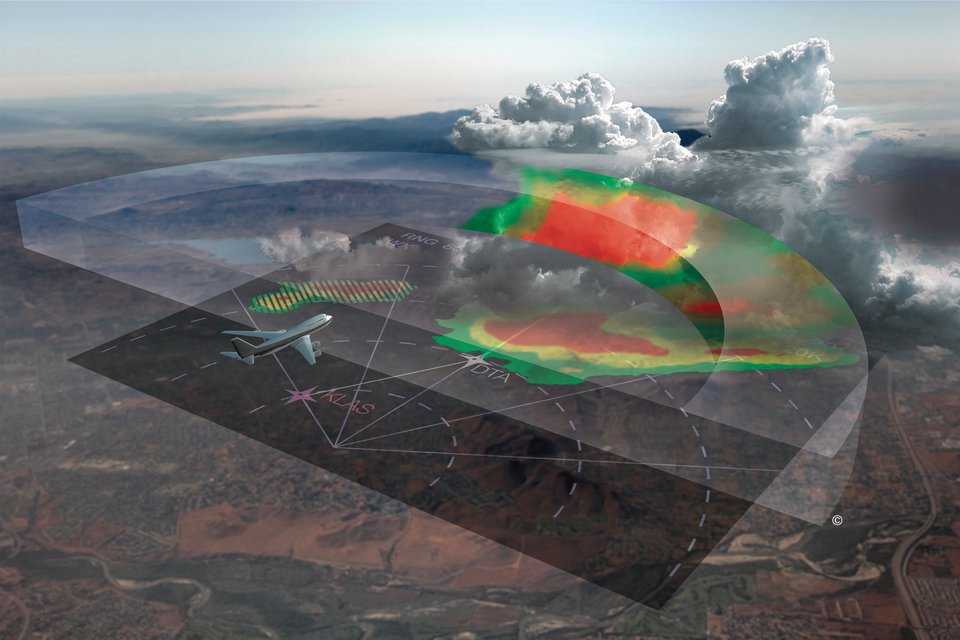We all know how radar works in general terms. We are familiar with watching the radar on our favorite news channel and can interpret the colored displays based on the meteorologist's assistance. However, proper radar functions differently in aircraft due to its non-stationary component.
 While the land-based radar position with respect to the Earth is static, the aircraft dynamics of varying pitch and roll attitudes require near-constant adjustments to maintain the radar sweep orthogonal with the horizon. Most of today’s airborne radar systems handle this automatically with little or no input from the flight crew. When radar stabilization ceases to function, the display may provide erroneous information with no error message and may mislead the pilots. A basic understanding of how radar stabilization works can help both the flight crew determine erroneous return information and assist the maintenance technicians tasked with troubleshooting the system.
While the land-based radar position with respect to the Earth is static, the aircraft dynamics of varying pitch and roll attitudes require near-constant adjustments to maintain the radar sweep orthogonal with the horizon. Most of today’s airborne radar systems handle this automatically with little or no input from the flight crew. When radar stabilization ceases to function, the display may provide erroneous information with no error message and may mislead the pilots. A basic understanding of how radar stabilization works can help both the flight crew determine erroneous return information and assist the maintenance technicians tasked with troubleshooting the system.
The drawing (courtesy of Honeywell) portrays the radar sweep arc and the returns from the precipitation. It is easy to see that if the radar tilt is turned too low, it would paint the ground as a false return. Likewise as the radar scans while the aircraft is in a bank, it would paint the ground on one side, and areas above the precipitation on the other side. The radar stabilization circuitry utilizes vertical gyro information to maintain the antenna sweep parallel with the horizon, thereby providing a useable return in all flight conditions.
Now have a look at the following video. Based on what you just learned, what do you think is happening?
The return indicates a failure of the stabilization function, either from erroneous vertical gyro information, or a failure of the radar stabilization circuitry itself. The antenna is sweeping down and left, painting the ground, and up when it sweeps to the right of the aircraft heading.
This unit needs to be removed and sent in for repair or overhaul. Duncan Aviation can support many radar systems with repairs, loaners, and exchanges.
October 2025
July 2025
June 2025
May 2025
May 2025